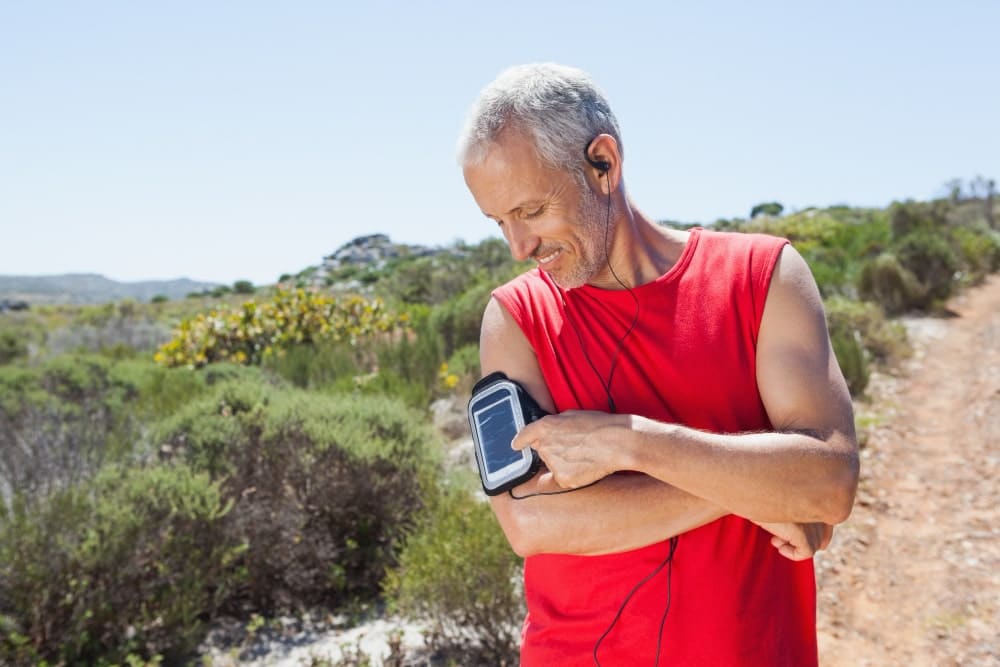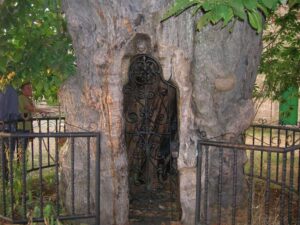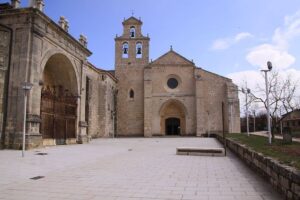
The Camino de Santiago is much more than a spiritual journey or a personal challenge. For many, it has become a powerful tool to improve health, especially heart health.
The combination of moderate physical exercise, contact with nature, disconnection from the hectic daily pace, and inner connection makes this experience a great preventive medicine for the cardiovascular system.
Throughout its various routes, the Camino offers not only inspiring landscapes and pilgrim hospitality but also the chance to generate measurable positive changes in our bodies. In this article, you will discover how such an adventure can become a real ally in caring for your heart, preventing diseases, and promoting healthier lifestyle habits.
Índice de contenidos
- 1 Movement as Medicine: How Walking Strengthens the Heart
- 2 Emotional Health Matters Too (and a lot)
- 3 Routes of the Camino de Santiago and Levels of Effort: Choose the One that Best Suits Your Cardiovascular Health
- 4 Controlling Pace and Daily Effort: Key to a Protected Heart
- 5 Warning signs you should not ignore
- 6 Measurable benefits: what science says about the Camino and your heart
- 7 Organised Camino de Santiago: more security to protect your health
- 8 Extra recommendations to protect your heart on the Camino
Movement as Medicine: How Walking Strengthens the Heart

Walking is a low-impact aerobic exercise with multiple benefits. From a cardiological perspective, it involves a constant activation of the cardiovascular system without the risks that can arise from more demanding activities like running.
Moreover, it allows maintaining a moderate intensity for several hours a day, which promotes oxygenation of the tissues and improves heart performance.
According to the Spanish Heart Foundation, walking at a constant pace for 30 to 60 minutes a day can reduce the risk of heart disease by up to 35%. The Camino de Santiago, which is walked over several days or weeks, multiplies this effect thanks to the regularity of the exercise and the healthy environment in which it takes place.
Main Cardiovascular Benefits of Walking the Camino:
- Improved blood circulation: the heart pumps more efficiently, helping to oxygenate muscles and vital organs.
- Reduction in LDL cholesterol and increase in HDL (the “good” one).
- Reduction in blood pressure for those with hypertension.
- Blood sugar control and better insulin sensitivity.
- Weight loss, reducing the strain on the heart.
These effects are even more noticeable when the exercise is done in natural and pollution-free environments, as happens in most of the stages of the Camino.
Emotional Health Matters Too (and a lot)

Numerous scientific studies have demonstrated the close relationship between emotional wellbeing and cardiovascular health. Chronic stress, anxiety, or depression can have direct negative effects on the cardiovascular system. They help to increase heart rate at rest, raising blood pressure and favouring the appearance of arrhythmias.
In this context, the Camino de Santiago acts as a natural escape route. The repetition of walking, the silence, the changing landscapes, the unhurried pace, and the opportunity to live in the present moment create a sense of peace that regulates the autonomic nervous system.
By decreasing sympathetic tone (stress) and favouring parasympathetic tone (relaxation), the secretion of hormones like cortisol and adrenaline is reduced.
Furthermore, walking with others or sharing experiences with fellow pilgrims generates a sense of belonging that also protects the heart. Emotional loneliness is a risk factor for cardiovascular disease, and walking towards Santiago Cathedral addresses exactly that: connecting people.
Routes of the Camino de Santiago and Levels of Effort: Choose the One that Best Suits Your Cardiovascular Health
The Camino offers many possible routes, each with its particularities, difficulty level, and type of terrain. Choosing the one that best suits your physical condition is key to ensuring the experience is both safe and beneficial. Below, we review some of the most popular routes, highlighting their characteristics from a cardiovascular health perspective:
Camino del Norte
With impressive coastal sections and a mild climate, this route combines beauty with some physical challenge. The stages are usually longer, with frequent elevation changes, so it is recommended for people who are already in good shape or accustomed to hiking.
The Camino de Santiago from Santander to Gijón is one of the most attractive variants of this route. It has a moderate difficulty, with stages ranging between 20 and 30 kilometres, and a profile with constant ascents, although less demanding than in other sections of the Camino del Norte, such as those crossing the Basque Country or Galicia.
Camino Portugués by the Coast
This is ideal for those looking for a more accessible route. The stages are generally quite flat, the surroundings are relaxing, and the physical effort remains at moderate levels, which benefits heart health without overloading it.
- The Camino de Santiago from Porto to A Guarda runs along the Atlantic coast from Portugal to the border with Galicia. The stages, of low-medium difficulty, are usually well marked and have few elevation changes, allowing you to walk consistently without putting a great strain on your body. It is ideal for older people or those starting the Camino for the first time.
- Once in Galicia, the Camino from A Guarda to Santiago remains easy on the heart. The terrain becomes slightly more undulating, but the stages are manageable, with distances around 20-25 kilometres. This part of the Camino allows you to enjoy the Galician coastal landscape and gradually venture inland, with a progressively manageable physical challenge.
Camino Francés
Very popular and social, it has an extensive network of services and options to split the stages. Its variety of terrain makes it adaptable to different physical levels. People with mild health issues can safely walk it if they plan properly.
Camino Primitivo
The most demanding option. Mountainous, solitary, and physically challenging, it is not recommended for people with cardiovascular diseases without medical supervision.
Recommendation: Before choosing a route, assess your current fitness level, get a medical check-up, and choose the option that best fits your needs.
Controlling Pace and Daily Effort: Key to a Protected Heart

A healthy walk is not only about the distance, but also the pace, intensity, and recovery capacity. Here are some practical recommendations to ensure your effort benefits your heart:
- Recommended average distance: between 15 and 25 km daily, depending on preparation.
- Heart rate control: keep your heart rate in the aerobic zone (60-75% of maximum).
- Useful technology: devices like heart rate monitors, smartwatches, or apps like Strava or Komoot can help you stay within a safe range.
- Avoid excesses: walking too much on the first day or pushing yourself harder than necessary can trigger cardiac fatigue.
Warning signs you should not ignore
- Chest pain or pressure. It could be a sign that the heart is working with difficulty. If you feel persistent tightness, especially if it radiates to the left arm, neck, or jaw, it is crucial to stop immediately and monitor the situation. This could be a symptom of angina or even a heart attack.
- Dizziness, nausea, or cold sweating. These sensations may indicate a sudden drop in blood pressure or a more serious cardiovascular episode. While they can sometimes be due to dehydration or fatigue, if they occur alongside other symptoms, they should be taken seriously.
- Palpitations or irregular heart rhythm. If you feel your heart beating irregularly, too fast, or skipping beats, it could be a sign of arrhythmia. While some are benign, others can be dangerous, especially if accompanied by weakness or pain.
- Shortness of breath. The feeling of breathlessness during exertion can indicate cardiac overload or pulmonary issues. If it occurs at rest or doesn’t improve with rest, it is a clear warning sign.
If you experience any of these symptoms, stop walking, find shade or a quiet place, hydrate, and assess whether the sensation improves. If it persists or worsens, contact medical assistance as soon as possible. Prevention is the best ally to reach Santiago in good health and safety.
Measurable benefits: what science says about the Camino and your heart
Recent studies have explored the effects of prolonged hiking on the cardiovascular system. Some key findings include:
- University of Navarra (2022): a study on a group of pilgrims showed improvements in blood pressure, lipid profile, and sleep quality after 10 days of walking.
- British Journal of Sports Medicine: walking 10,000 steps daily is associated with a lower incidence of cardiovascular disease and death from any cause.
- Harvard Health Publishing: regular walking improves heart rate variability, an indicator of cardiovascular resilience.
These data reinforce the idea that the Camino, when planned with common sense and moderation, has tangible benefits for your heart health.
Organised Camino de Santiago: more security to protect your health
One of the smartest ways to protect your health during the Camino is to opt for structured planning. An organised Camino Santiago allows you to:
- Adjust stages to your capabilities without improvisation. Having a pre-defined itinerary allows you to adapt the distance and daily effort to your physical condition, avoiding overexertion that could jeopardise your cardiovascular health.
- Have reserved accommodation for proper rest. Sleeping well is crucial for heart and muscle recovery. Guaranteed accommodation at the end of each stage eliminates uncertainty and allows you to focus on your well-being.
- Get rid of the extra weight of the backpack, avoiding overloads. Walking without a heavy load reduces cardiac and joint effort, especially for older people or those with certain conditions. Daily luggage transport is a great preventative advantage.
- Have logistical assistance in case of any unforeseen events. In case of extreme fatigue, injury, or warning symptoms, having immediate help can make all the difference. This provides peace of mind, which also affects heart health.
Extra recommendations to protect your heart on the Camino
Although walking is a safe exercise, there are some practices that make the difference between a healthy walk and a risky one. Here are some guidelines to follow:
- Evaluate your starting point. Get a full check-up before setting off. An electrocardiogram or stress test can detect hidden issues.
- Plan your diet. Carry healthy snacks (nuts, dried fruit, whole grain bars). Avoid eating too much fat, cured meats, or heavy meals before walking.
- Stay hydrated frequently. Walking while dehydrated increases heart rate. Carry a reusable bottle and drink at least every 30-45 minutes.
- Sleep well every night. Sleep is vital for cardiovascular recovery. Try to go to bed early and avoid long after-meals.
- Listen to your body and adapt your pace. Some stages may seem easy on paper but become difficult due to heat, wind, or accumulated fatigue. Don’t be afraid to stop.
- Wear appropriate footwear. Good hiking shoes reduce joint impact and prevent injuries that could affect your walk and cause overexertion.
Walking is a simple but powerful act. And doing it over several days on one of the most iconic routes in the world turns that simple act into a true experience of transformation. The Camino de Santiago not only strengthens the legs, character, or determination. It also strengthens the heart, both literally and metaphorically.
Choosing the right route, walking mindfully, resting well, and taking care of every aspect of the journey can make a real difference to your health. The destination is important, yes, but on the Camino, every step counts.









